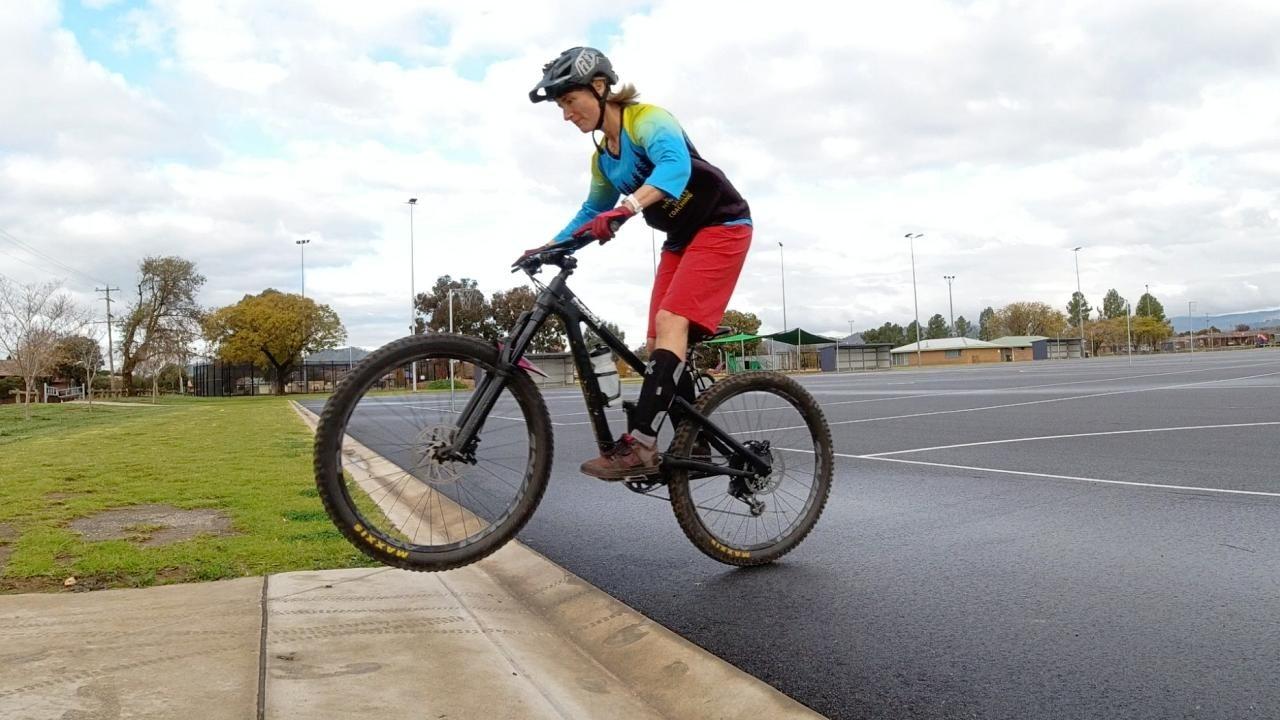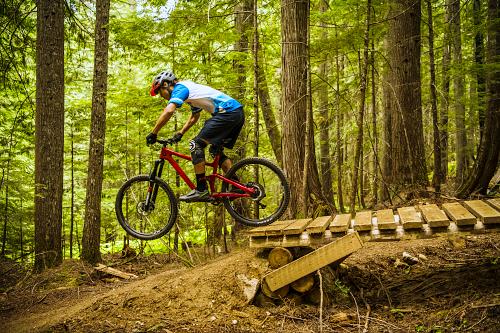Tutorial: Classic Front Wheel Lifts

The classic front wheel lift is a beginner level skill to learn and has many useful applications on the trail. RLC Head Coach, Ryan Leech, shares the secrets.
Manual Versus Classic
The first distinction to make is between the manual front wheel lift and the classic front wheel lift. Many riders are familiar with the manual front wheel lift, where the rider uses body weight to suspend the front wheel in the air as they roll along on their back wheel. It looks totally boss, however, it’s a difficult skill to master, which is why I developed a 30-lesson online course, Manual Masterclass.

In contrast, the classic front wheel lift is much easier to learn. It’s a compact movement where the front wheel is lifted briefly using the arms. It’s not as stylish as the manual, but a super useful skill to have in your toolbox. It requires minimal energy to perform and can be done over a short distance, making it possible to use where a manual would take too much time and effort. It's so versatile!
*please note that there is an infinite spectrum between these two methods of lifting the front wheel off the ground. For example you can perform a 50-50 blend between these two techniques for certain situations out on the trail. The classic front wheel lift is the easiest to learn, so that's what we're briefly covering in this short article!
Equipment
To ensure you develop the best possible technique when learning the classic front wheel lift, flat pedals and shin pads are highly recommended. Practicing on a flat grassy area provides a softer landing should you stumble. It’s safer if you lower your bike’s seat. Have a sports cone, piece of rope or other low-consequence obstacle on hand for the second lesson.
Lesson One: Technique
First spend some time practicing the correct technique before attempting to lift the front wheel over obstacles or using it in a trail environment: 
Lesson Two: Timing
Move on to developing your timing only once you’re confident with the basic technique:
- Find a line in the pavement, or put a sports cone, stick or piece of rope on the ground to act as a marker.
- Perform the front wheel lift as taught above, but now time your lift to clear the marker.
- How far the front wheel travels while airborne depends upon how high you lift the front wheel and your speed. Experiment with different heights and speeds.
- Once you’re comfortable with your timing, find a depression in the ground (not too deep or sharp edged) and practice lifting your front wheel over it. Then find a gentle speed bump (not too big or sharp edged) and do the same.

- Exercise caution! It’s better to lift too late than too early. If your wheel lands in a depression, or hits the ground just in front of a bump, the bike may stall and send you over the handlebars. The risk increases as the obstacles become higher, deeper and/or sharper.
- It’s useful to have someone video your attempts so you can see just how far your front wheel is actually travelling, as it’s often difficult to tell from atop the bike.
- Lifting too high can introduce instability, so don’t over do it. Matching your speed and lift to the obstacle is the essence of performing the classic front wheel lift with skill.

Lesson Three: Trail Use
The final step is to bring your front wheel lift to the trail. Do this with caution as performing any technique in a trail environment when fatigued is always more challenging than when learning in a controlled setting. Start slow and small, and work up to larger obstacles at higher speeds. 
The classic front wheel lift can be used for:
- Clearing trail depressions (e.g. holes and braking bumps)
- Clearing trail obstacles (e.g. roots, rocks, etc.)
- Lifting the front wheel ONTO obstacles such as small ledges, rocks etc.
- Lofting the front wheel OFF obstacles such as small ledges, rocks etc.
- Adjusting front wheel position sideways for tight trail situations.
The classic front wheel lift can be performed at a variety of speeds, from blasting down the trail, to stationary in a rock garden to reposition the front wheel, making it a very useful skill to master. Have fun and ride on!
Those wanting to take their riding to the next level should also consider learning the manual front wheel lift. To explore this skill visit: https://www.ryanleech.com/manual-master-class/
Stay connected with news and updates!
Join our mailing list to receive the latest news and updates from our team.
Don't worry, your information will not be shared.
We hate SPAM. We will never sell your information, for any reason.




